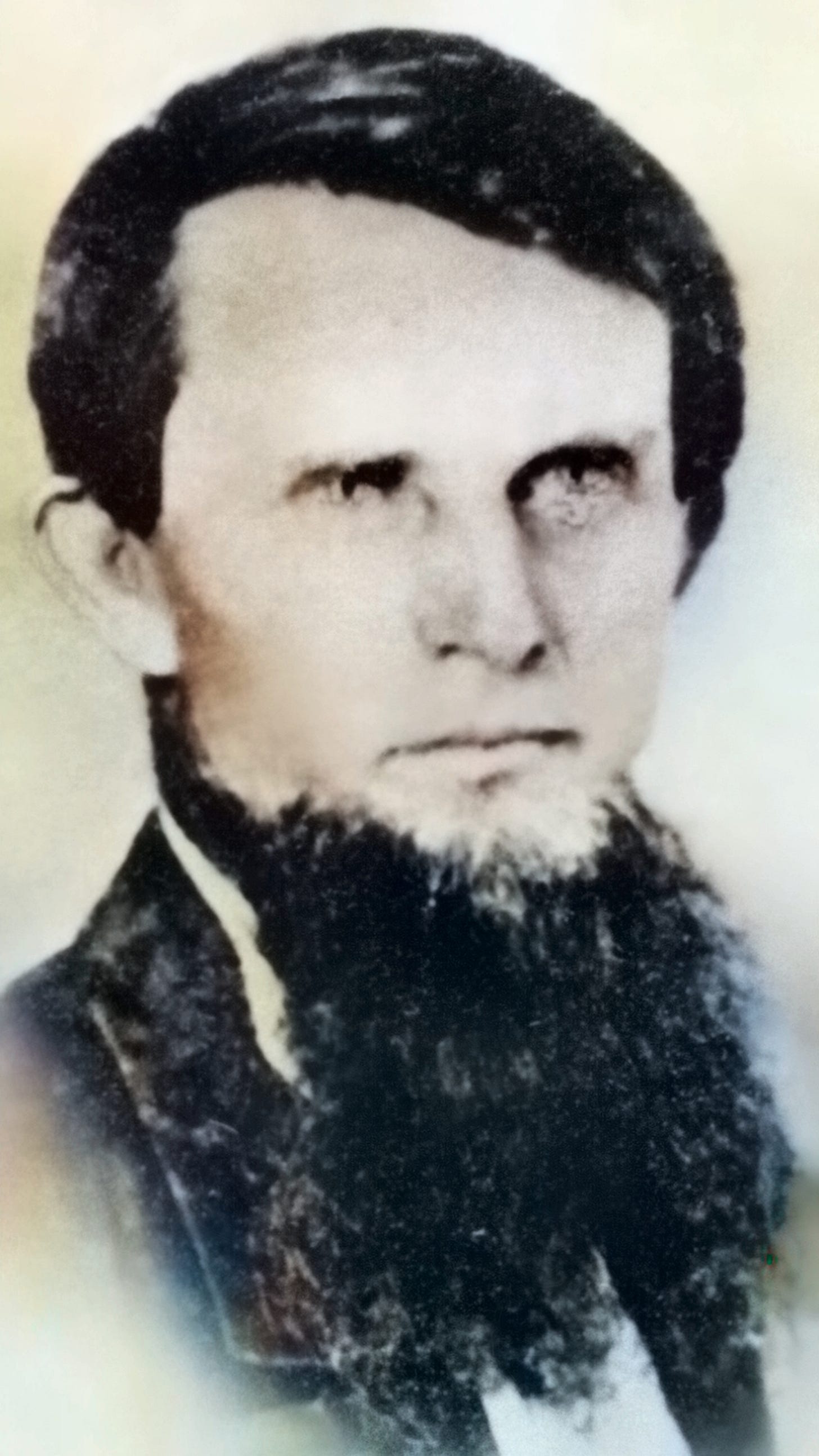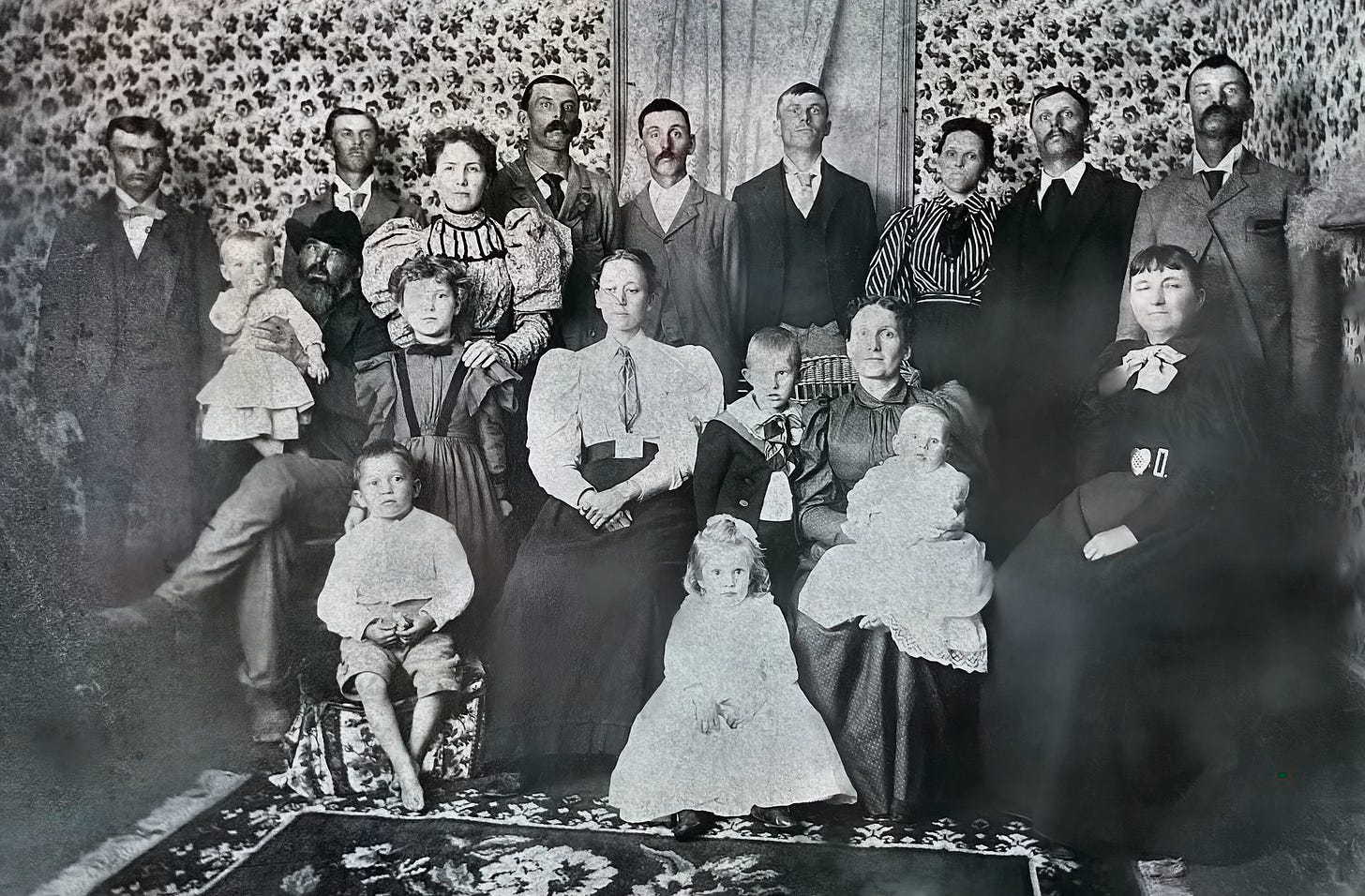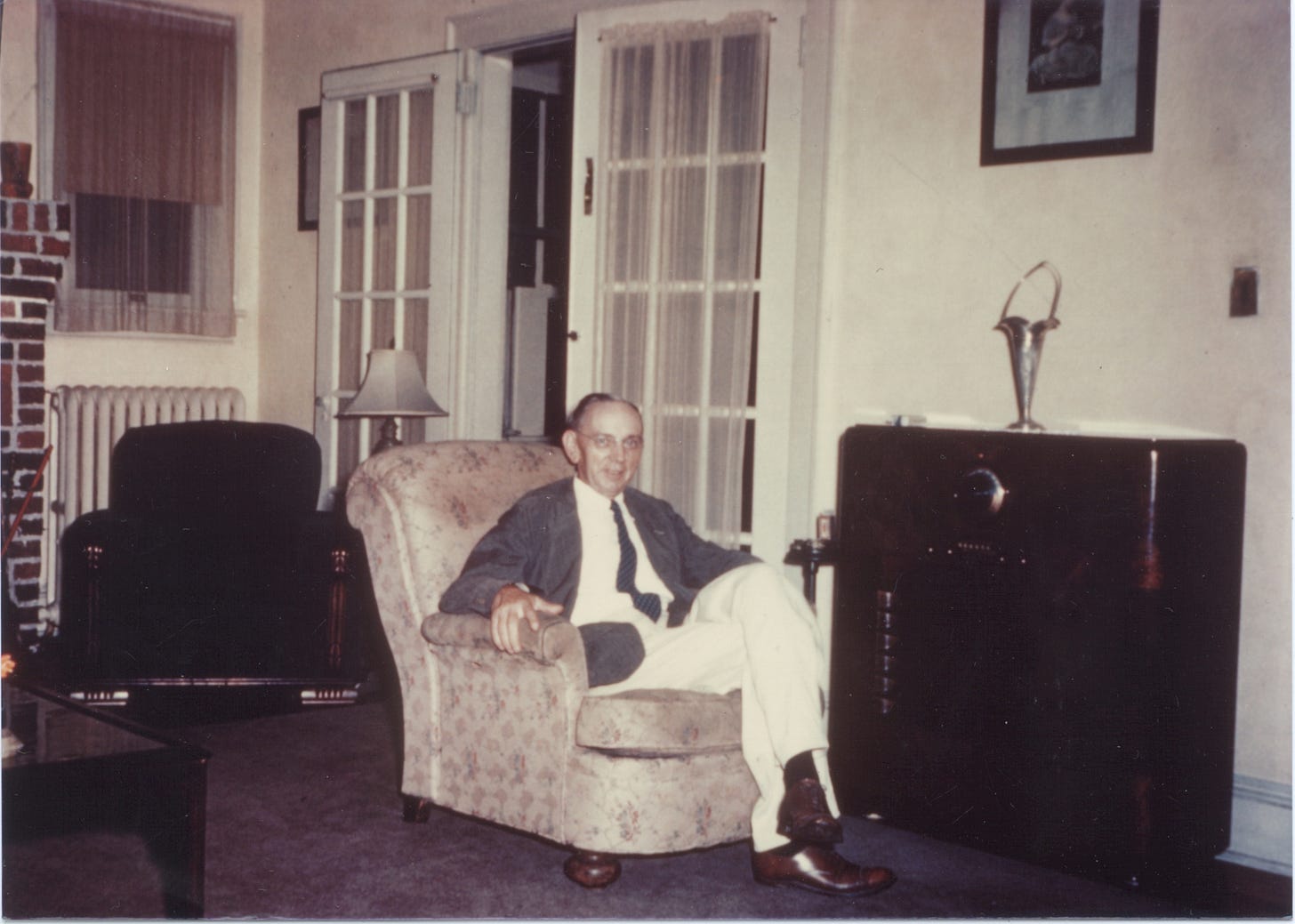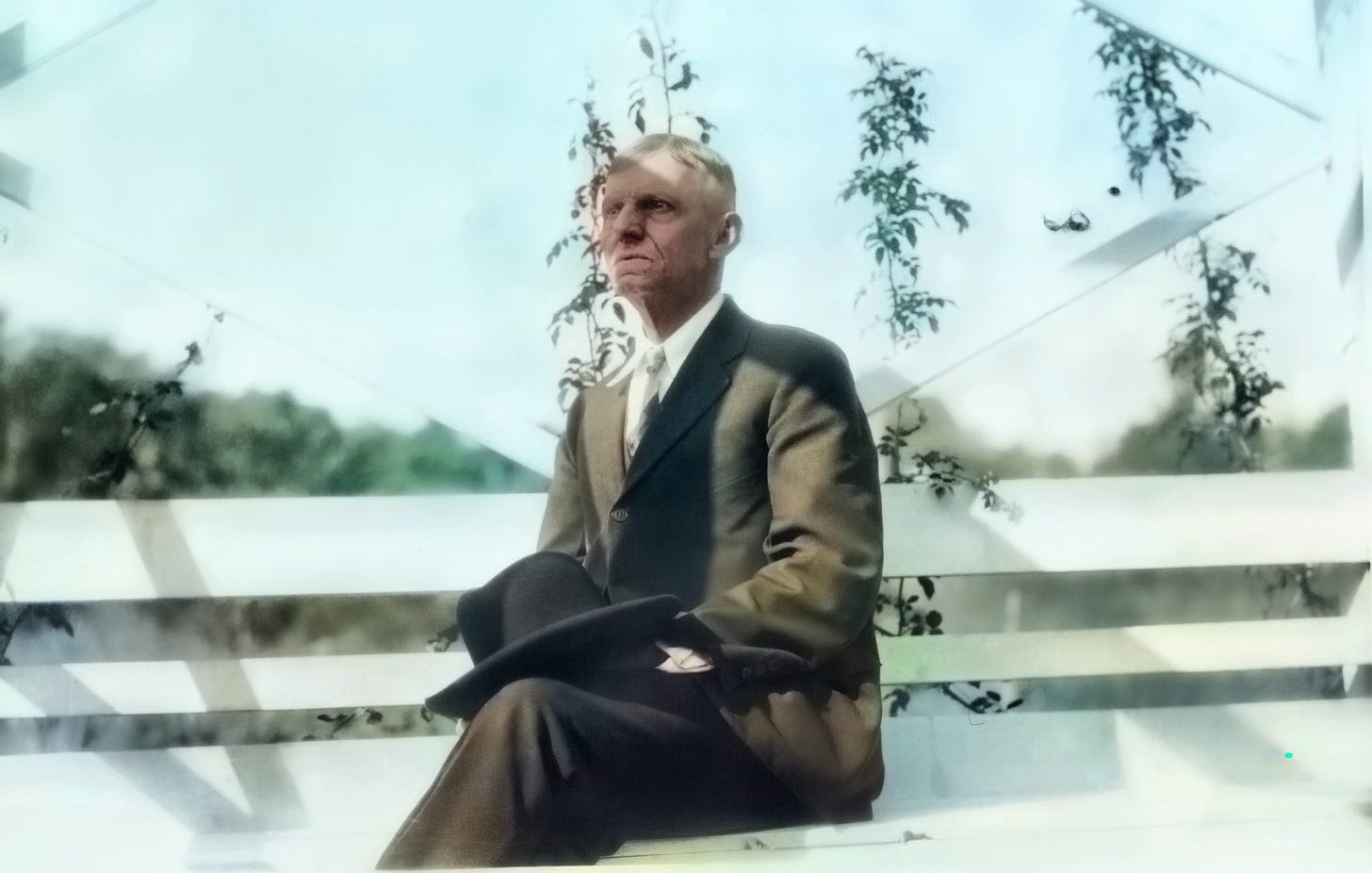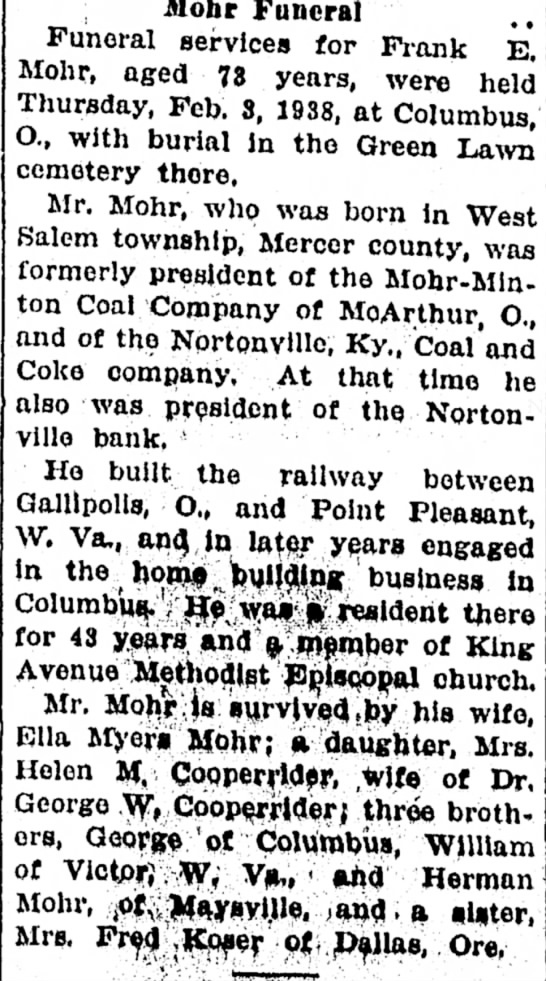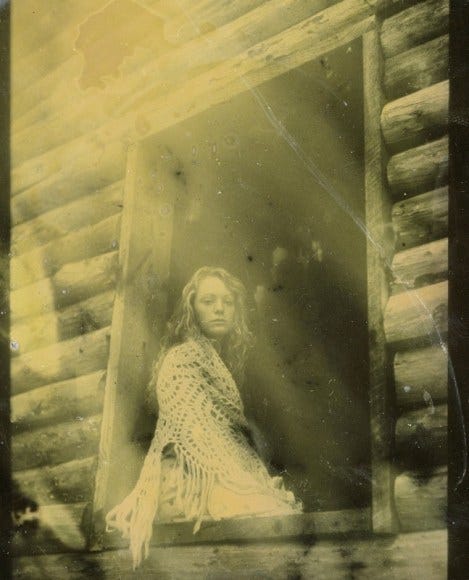True-life Ghost Stories from the Edgar Cayce Archives
Discarnate souls trapped on the earth plane do not necessarily come to us for our benefit, but for their own.
The empty seats of the church began to fill with ghosts…
The Edgar Cayce family of Virginia Beach were not ordinary folks and their neighbors knew it. Twice a day, nearly every day except for Sundays, Edgar would retreat to his study, enter into a hypnotic trance, and with the help of his wife Gertrude and stenographer Gladys Davis spend forty-five minutes to an hour communicating with the spirit world. What the neighbors didn't know was that Edgar, in a waking state, also entertained ghosts who dropped by for friendly chats, or in one case, briefly took-up residence in an upstairs bedroom.
Conversing with ghosts was nothing new for Edgar. As a five-year-old in rural Kentucky, he frequently visited with his dead grandfather, Thomas Jefferson Cayce, who had been killed after being thrown from a horse. Little Edgar's ghostly conversations became a matter of great concern to his aunt, Lulu Boyd Cayce, who advised Edgar's parents that they should take their son to see a doctor. Either that or a priest. "He's got the Devil in him," Lulu told Edgar's father Leslie. "No good can come of this."
One of the first ghosts to appear to young Edgar was his deceased grandfather, Thomas Jefferson Cayce.
The subject had first come to the family's attention because Edgar was spending so much time alone in the family tobacco barn. When asked what he was doing, Edgar matter-of-factly declared that he wasn't alone. Grandpa was there. According to Edgar, Grandpa was out in the fields too, working alongside the farmhands, helping without them knowing it by reminding them of chores that needed to be done. Little Edgar went on to say that grandpa could sometimes be hard to see, that he frequently appeared in "beams of light," and that if Edgar looked really hard, he could see right through him.
Thomas Jefferson Cayce's favorite place to sit, Edgar confided, was under the eaves of the barn, near a robin's nest. Edgar offered to show his Aunt Lulu the spot, but she sternly declined. This was strange behavior indeed, but what really frightened her were the stories Edgar said his grandfather had been telling him about the Cayce family's distant past. These stories were not the kind easily produced by the overactive imagination of a five-year-old, but authentic accounts of the Cayce family's early years in Virginia, before coming to Kentucky, stories that only the older generation would know about.
Edgar’s Aunt Lulu, seated at center with the Cayces of Beverly, believed Edgar should be examined by a doctor. Either that or a priest. "He's got the Devil in him," she told Edgar's father Leslie (top row, second from right). "No good can come of this."
At age thirteen Edgar was visited by an angel. Some accounts say that the visitation took place under a favorite willow tree at the back of the house. Edgar himself, however, said that the spirit appeared to him in his bedroom, after he had spent a long day reading his Bible and asking how he could be of service to the Lord. He had eaten dinner and, as usual, gone to bed after helping his mother with the chores. His sisters were fast asleep in beds adjacent to his own when he suddenly awoke and saw what he described as a powerful light coming through the doorway.
"I felt as if I were being lifted up," Edgar later wrote. "A glorious light, as of the rising morning sun, seemed to fill the whole room, and a figure appeared at the foot of my bed. I was sure it was my mother and called [out], but she didn't answer. For the moment I was frightened, climbed out of bed, and went to my mother's room. No, she hadn't called. Almost immediately, after I returned to my couch, the figure came again. Then it seemed all gloriously bright—an angel, or what, I knew not, but gently, patiently, it said: 'Thy prayers are heard. You will have your wish. Remain faithful. Be true to yourself. Help the sick, the afflicted.'"
Edgar slept very little that night. Once the vision had faded, he rushed outside to his favorite willow tree, and through its branches, the moon seemed to shine more brightly than he had ever seen it. He knelt beside the tree and thanked God for answering his prayers. In the morning, as the sun began to rise, he awoke to find himself still sitting under the tree. A squirrel came down from one of the branches and searched for nuts in Edgar's pocket. He felt a sudden sense of joy and release as if the mysteries of his early childhood had come into sharp focus. It was at that moment that Edgar believed he had obtained his first true insight into the life that lay ahead of him. He would be doing "God's work," though exactly what he was to do, and how he was to prepare himself were questions he hadn't yet begun to address.
More than three years would elapse before he summoned the courage to tell anyone about the angel's visit. To have done so would surely have upset Aunt Lulu and the rest of the family, and even if he had felt up to facing an interrogation at home, and the one that would inevitably have followed at church, he didn't feel he had the skills to convey the intensely personal nature of his vision or to avoid public mockery and skepticism. "I had no way of knowing which was more real," he later confessed, "the vision of the lady or the pillow I rested my head upon."
In Edgar's later years in Virginia Beach, these and other stories about his childhood were widely circulated in newspapers, magazines, and There Is A River, the first Cayce biography. What wasn't publicly acknowledged were the visits by ghostly apparitions that were still a part of his daily life. Among the local villagers, he was already notorious for his hypnotic trance sessions, so he and the rest of the Cayce family were happy to keep quiet about what else was going on. An unconscious psychic (who channeled while asleep) was somehow less threatening, so the rationale went, than a conscious clairvoyant at large in the community. What would fellow parishioners at the Presbyterian Church think?
The irony is that some of the best-documented incidents actually occurred while Edgar was at church. On Tuesday, November 15, 1932, for example, Edgar was teaching his weekly bible study class. He was at first disappointed that so many of his regular attendees hadn't come that evening. But as he began his lesson—a biblical discussion of the admonition of Joshua—the empty seats began to fill with ghosts. Edgar's father, Leslie, who was attending the class, couldn't see what Edgar saw, but from the look of astonishment on his son's face, he knew that something unusual was taking place. After the class, Edgar explained to Leslie what had happened: "I saw the entire section of the church fill with those disincarnate entities, people of many faiths ... Many I knew. Many I did not."
On another occasion, May 7, 1934, when Edgar was giving a talk on the second coming of Christ, the church again filled with the dead. The larger crowd this evening, as the readings suggest, was because Edgar, in a previous incarnation, had been Lucius of Cyrene—the follower of Jesus who wrote the gospel of Luke, which provided the most concrete and precise account of Jesus' birth, ministry, death and resurrection. Those in attendance in Virginia Beach's Presbyterian Church—both the living and the dead—may actually have been treated to what amounted to a first-person discourse on what was, and was to be. No wonder he packed the house!
Not long before that, on October 22, 1933, Byron Wyrick, a close friend of Edgar's, suddenly appeared in the Cayce's Virginia Beach living room while Edgar was listening to his favorite Sunday night radio gospel show. "I realized my friend was sitting there with me listening to the music," Edgar said. "He turned to me and said, 'Cayce, there is the survival of the personality... but [the life of prayer] is the only life to live.'" What made this incident extraordinary was that Wyrick had been injured in an accident and had died six months before this visit. (Incidentally, in trance Cayce had said that Wyrick had been, in a previous incarnation, the model for the face on the Great Sphinx at Giza.)
Edgar enjoyed sitting in his Virginia Beach living room with the ghost of Byron Wyrick while listening to their favorite Sunday night radio gospel show.
As Gertrude would later report, Wyrick became a regular visitor to the Cayce household after that, always making his appearance on Sunday nights in time to join Edgar listening to the gospel hour on the radio. But he was by no means the only unseen visitor to their home. As everyone in the household acknowledged, Edgar carried on one-sided conversations so frequently that they became almost commonplace. Three such incidents are worth noting because they provide insights into why—to Edgar's way of thinking—discarnate spirits sometimes remained "earthbound," and how he could help them make the transition to another plane of consciousness.
In one incident, late in 1936 in Virginia Beach, Gertrude, a light sleeper, awoke to the sound of rapping on their second-floor bedroom window. By now, accustomed to such phenomena, she elbowed Edgar in the ribs to wake him up and asked him to see who it was. Hovering outside was a woman named Bunchie, whom the Cayces had once employed at their photo studio in Selma, Alabama. Gertrude couldn't see her, but Edgar did. (She was well-liked by the Cayces in Selma, but not for her intelligence, something which may have figured into what came next.)
Edgar reported reaching out to touch her, but as soon as he did, she vanished, only to reappear a few minutes later. At Gertrude's request (she wanted to get some sleep), Edgar invited Bunchie to meet him downstairs at the front door. Bunchie's ghost came in through the door and she and Edgar proceeded to chat for an hour or so. She had come thinking she was ill and needed Cayce's trance medical advice, which presented a problem for Edgar since she was already dead.
Edgar did not learn when or how she had died, only that she didn't realize she had. She apparently had no sense of time, either, and spoke of seeing Edgar's father in Selma recently, though it had been many years since Leslie had been there. She also told Edgar that she was still being treated for an illness by a Selma physician, Dr. Furniss, who Edgar would later learn had also passed away. Asked how she had found Edgar, she said she had overheard a conversation in Selma about their move to Virginia Beach and had now come looking for him, hoping Edgar could save her life.
Edgar broke the tragic news to her. She had already succumbed to the illness and died. He told her to stop concentrating on the illness that had obviously obsessed her, and that she should "look for the light" that would lead her to where she was supposed to go. Bunchie never returned to the Cayce home again.
A year after this incident, another ghost visited the Cayces, only this time it was permitted to remain for more than a month, during which time everyone in the household became convinced of its presence. The ghost was Edgar's father, Leslie, who had died at age eighty-three on April 12, 1937, while on a trip to Nashville to visit his daughters, Annie and Sarah. A fire had broken out in the upstairs apartment of Annie Cayce's house, and while escaping the building, Leslie suffered burns on his head and neck, which, due to his advanced age, hastened his death. An emergency reading for Leslie that was conducted immediately after the fire, began, "It is the end."
Leslie B. Cayce seated in the backyard of Edgar’s Virginia Beach home before his death, soon to return to the home as a ghostly presence.
About a week after Leslie's funeral in Hopkinsville, family members began hearing strange noises in his former bedroom at the top of the stairs in Virginia Beach. Hugh Lynn swore he heard his grandfather's distinctive heavy breathing. Gertrude and Gladys also heard someone walking around. Edgar went into the room to see for himself. When he came out, he reported the bad news first: "Leslie's back." The good news was next: "He'll only be here for a few [more] days." As if to casually explain the phenomenon, Edgar described the conversation he had had with his deceased father. "In his mind he is trying to straighten out his papers... He'll not be here long. Don't bother him because it will upset him and he can't communicate, can't make himself heard."
Hugh Lynn found it rather curious to be living with a ghost and availed himself of the opportunity to see if nonfamily members could hear or see what was apparent to Gladys and the Cayces. He decided to use the mailman as a test subject. The mailman, whom everyone in the family knew quite well, was invited into the house and asked to walk up the stairs to see if he could hear anything unusual. According to Hugh Lynn, when the mailman was halfway up the stairs he too heard Leslie's breathing. He looked at Hugh Lynn very strangely and asked, "Isn't that where your grandfather stayed?" Hugh answered: "Yes." Then the mailman asked what the sound was that he was listening to. Hugh Lynn said, "It's my grandfather. He's back." The mailman allegedly turned white and bolted from the house. From that day on he wouldn't bring the mail to the door, but tossed it into the hedge, running as he left the yard.
A few days after the incident, a great deal of noise began emanating from Leslie's room. Hugh Lynn headed for the stairs to see what was the matter. "Don't do that," Edgar warned. Hugh Lynn didn't listen to his father and rushed up the stairs anyway, and at the top of the stairs ran smack into what he believed to be his grandfather.
"I could feel him," Hugh Lynn said. "Every hair on my head went straight up in the air. I don't know how I knew it, but I just knew it was my grandfather. It was cold, but quite a different chill, and it was like running into cobwebs in the dark woods, very fine when they touch you, but when you wipe them away there is nothing there."
Then there was the ghost of Frank Mohr, who had suffered a stroke in July 1937, brought on by arterial sclerosis, and died on February 1, 1938. In July 1940, Mohr appeared to Edgar in a dream, in which Mohr told Edgar that he would receive a letter from Mrs. Grace Wilson, a longtime friend of Mohr's who had received physical and life readings from Edgar in the late 1920s. A few days after the dream, Edgar did indeed receive a request from Mrs. Wilson for a reading for James Taft, her son-in-law, a musician who had recently been confined to a tuberculosis sanitarium in Monrovia, California.
Thanks to the intervention from the spirit of Frank Mohr, Edgar immediately did the reading, which recommended a treatment not unlike that which had saved Gertrude's life from tuberculosis twenty-six years earlier. James Taft's health improved greatly upon following Cayce's recommendations but, several months later, his condition took a turn for the worse, and he died. Edgar shared the family's grief and was at a loss to explain what had gone wrong. Frank Mohr answered that question in a dream Edgar had a few days after Taft's death. Mohr told Edgar that the reading had been a good one and that the musician had died because he had neglected to follow through on the recommended treatments.
Mohr visited Edgar once more in an even more dramatic way—during a health reading for Mohr's wife, Ella, who had been suffering from a heart condition. In the middle of the session, Mohr appeared to Edgar, telling him, "No, no, Mr. Cayce, Ella wants to come on [to be with me on the other side]. Don't prevent her." Ella Mohr died the day after the reading. In Edgar's heartfelt letter of condolence to the Mohr's daughter, Helen, he assured her that Ella, like Frank, lived on in another plane. "They have only gone through God's other door and we must not worry too much for them."
These and other ghostly encounters suggest that discarnate spirits do indeed inhabit our earthly realm and that if an individual is sensitive or attuned to the spirit world, as was Cayce, communication can take place. How and why such spirits exist among us is determined, the readings tell us, by whatever "form" that spirit creates or "assumes itself to be." If, for example, a spirit can't accept its passing, or for a variety of reasons is unwilling or unable to move beyond the earth plane, this is where it remains until it chooses to leave. As the readings tell us, "many an individual has remained in what is called death for... years, without realizing it was dead... The ability to communicate and attempts to do so are what usually disturb or worry [the dead]."
Cayce, in trance, described these earth-bound discarnate spirits as manifesting as "pictures" or "expressions" of how they once appeared in flesh and blood. Also in trance, Cayce cautioned not to rely on information from them as these spirits are not necessarily any wiser, insightful, or helpful than they were before they had died. Simply because they no longer have human bodies doesn't bring enlightenment. Further, the channel or "pattern" of communication is dependent upon the ability or "attunement" of both the communicator and the receiver, much as, the readings tell us, a radio transmitter might work. In other words, as with any communication, there can be impediments and miscommunication. More often than not, the readings suggest, communication is limited to a subconscious or "thought form" level, as in a dream or a sudden and unexplained impulse.
Many other insights can be gleaned from the readings, but one of the most important relates to why visitations take place. Whether the communications are from angelic spirits or discarnate souls trapped on the earth plane, they do not necessarily come to us for our benefit, but for their own. In other words, discarnate spirits and angels too, have an agenda. The spirits want our help, not—as one would imagine—the other way around. This is why Cayce cautioned not to recklessly engage discarnate spirits by experimenting with Ouija boards and crystal balls (yes, Cayce acknowledged, such devices could be used, with proper attunement, to channel the dead). "Know that they come to you for aid, not to aid you," the readings warn.
Discarnates want our help, not the other way around!
When confronted by a discarnate, Cayce advised providing the entity with aid or direction, whether it is guiding the discarnate to the light of God or sending them love and understanding through prayer. The important thing is to protect ourselves and loved ones in the process, by what we hold in our heads and in our hearts. Our intentions must be of the highest order.
Two ghost-related encounters from the Cayce readings make this quite clear, as they shed light on how an unwelcome discarnate can wreak havoc in our personal lives, and what we can do about it. The first was for Amanda White, a fifty-six-year-old Virginia housewife who was considering leaving her husband, who was alcoholic. She described how, after binge drinking, her husband would black out, become violent, acting as if he were someone altogether different from the man she had married. Cayce, in trance, told her that her concerns were warranted, and she should take action. The reason he blacked out when he was drinking was because a discarnate entity, hovering about him, seized the opportunity to "possess" him. The presumption here and in other readings, is that there exist spirits who are trapped in the earth realm because of their addictions, and who take the opportunity, when available, to slip into the body of a living person who shares their addiction, vicariously experiencing what they most craved in life.
Cayce, in trance, offered both medical and spiritual advice to the distraught woman and her husband. When sober, Mr. White should avail himself of the Radiac, a low-level electrical device that would help reduce his desire for alcohol. However, the sleeping Cayce said that her husband's recovery from addiction (and protection from the discarnate), would not be possible unless he truly desired to get well. As for Mrs. White, the advice was to be understanding and sympathetic to his condition, but to not put herself in harm's way or to debase herself by giving in to anger, resentment, and fear. She would find peace and protection from within, through "kindness, gentleness, and prayer."
The second reading was given for Cayce Jones, the infant son, (named in Edgar's honor) of his best friends in Selma. Edgar, in trance, described the child as being particularly psychic, one who would do well to enter the ministry or become a communicator of the realms beyond. (He became a radio talk-show host). Ten years later, when Edgar was visiting Selma, the child's mother related a curious phenomenon that was creating a great strain on their family life. She told Edgar that young Cayce Jones would not go alone into their new house unless accompanied by a parent. When the mother asked her son what the problem was, he simply replied: "You would not understand."
Psychically inclined Cayce Jones, standing alongside Edgar (middle), and his father, Lamar (left), refused to enter his family’s new home because of an unearthly presence inside.
The parents asked Edgar to look into the matter. After discussions with the child, it soon became apparent that the boy had indeed begun to manifest the psychic abilities foretold in his first life-reading. He confided to Edgar what he was reluctant to tell his parents: that he believed that the ghost of someone who had died in the house had remained behind. The child was "picking up" disturbing psychic vibrations from the discarnate. In discussions with Edgar, the problem was easily resolved. Cayce Jones had only to take a living thing into the room with him, something he loved or cared for, whether it was a caged bird or a potted plant, to offset the vibrations of the unwanted presence.
The lesson here, as in so many readings, is that love trumps all. As Edgar later reported in a letter to a mutual friend in Selma, the experience confirmed what he knew to be true, and what the child discovered for himself each and every time he subsequently entered the house. "A bird or the flower... [has] Life, and Life is God. [and God is Love.] And when He is with me... nothing can harm."





